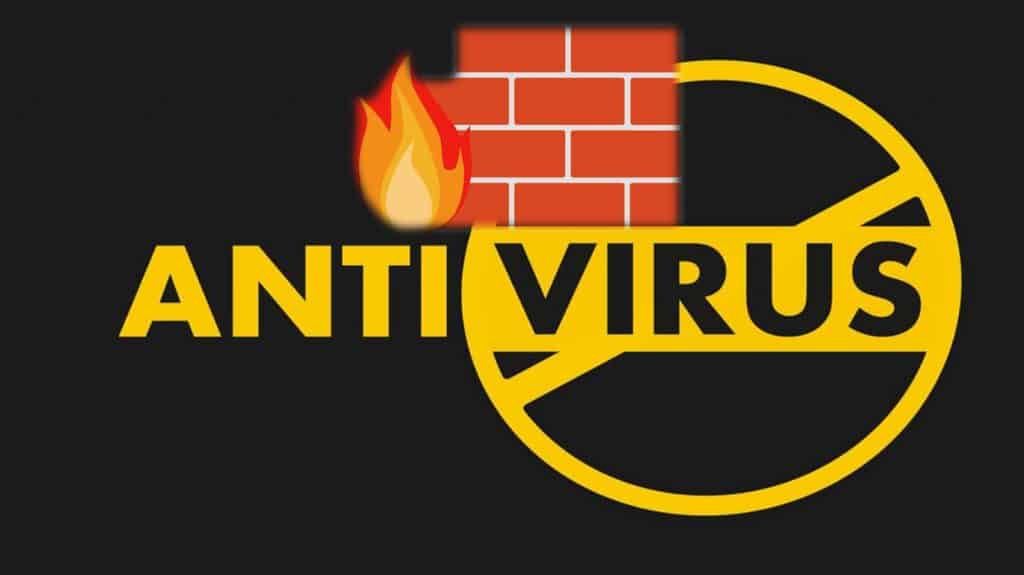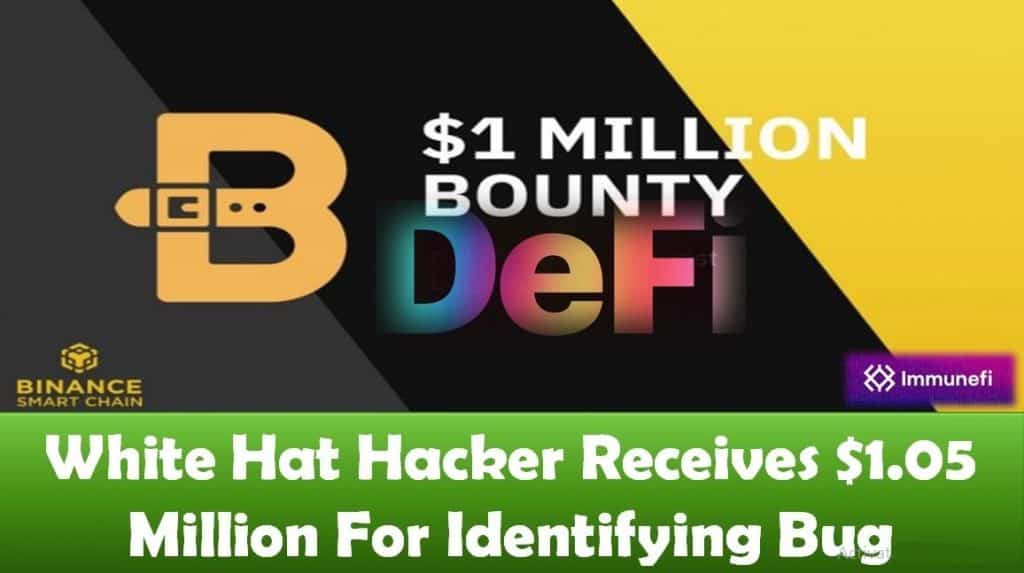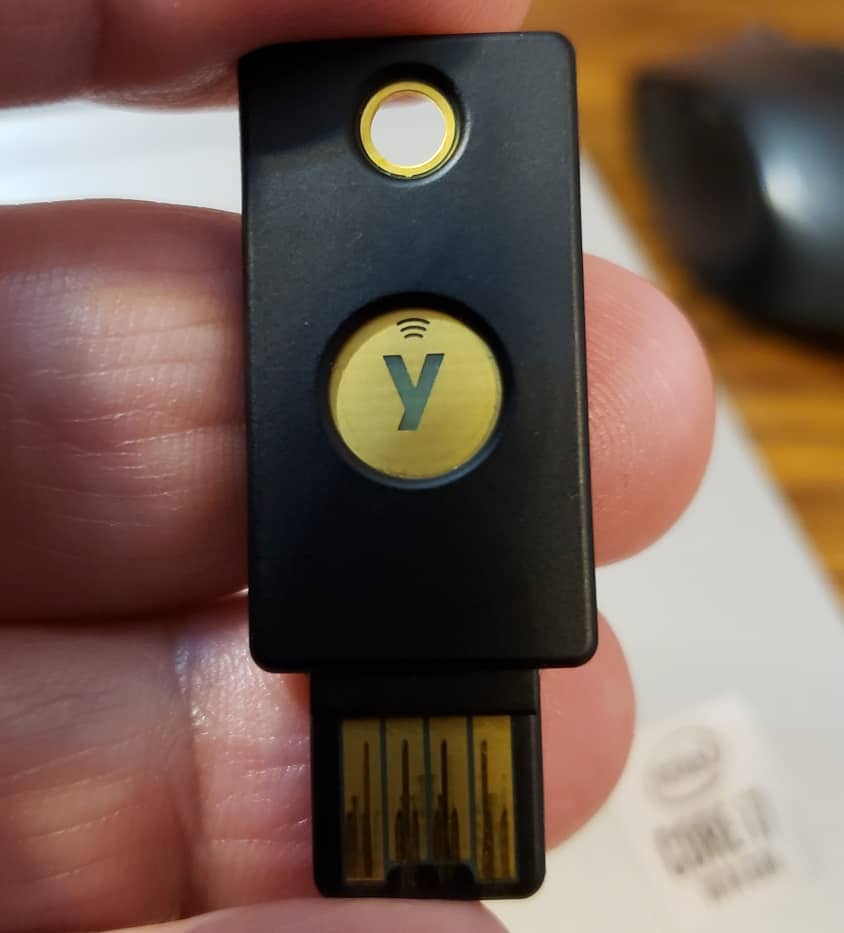
Hacks Losses & Thefts – Can You Recover Your Crypto?
Last updated on June 8th, 2023 at 02:59 pm
You’ve invested your hard earned money into cryptocurrency. You might have done this because you were looking to hedge against increasing inflation, invest in a potential growth asset, or to just make a quick buck. However, if you suffer a loss of that money it can be devastating.
So, if the unthinkable happens and you lose your cryptocurrency, is it possible to get it back?
Cryptocurrency transactions on the blockchain, once confirmed, are irreversible. There may be a mode of recovery for crypto lost by other means like device failure or password loss. For crypto lost or stolen via a hack of a platform or exchange, there may be legal recourse to recover the value of the crypto.
Ultimately there are many different ways that you can lose access to your cryptocurrency. Not all of these are malicious, as a matter of fact, many are accidental.
However, if you should find yourself in the unfortunate situation of having your crypto stolen due to hackers and other malicious actors, there may be options available to help you recover your cryptocurrency.
Let’s discuss some of the most infamous hacks and thefts in the space, whether or not you can recover your funds if they are lost or stolen, and let’s review the steps you can take as well as how to protect your investment from further losses.
Cryptocurrency and Blockchain Overview
Cryptocurrency and blockchain technology have emerged as disruptive forces in the world of finance and business.
In its simplest sense, cryptocurrency is a digital asset designed to work as a medium of exchange. It utilizes cryptography and blockchain technology to secure financial transactions, control the creation of additional units and verify the transfer of assets via consensus protocols.
For a deeper understanding of what cryptocurrency is, start with the article I wrote here.
Blockchain technology is an incorruptible digital ledger that records, stores and facilitates the transfer of assets in a secure, efficient and transparent way.
For a deeper understanding of what blockchain is, start with the article I wrote here.
Cryptocurrency and blockchain technology continue to enable tremendous improvements in the way transactions are handled globally by creating decentralized networks that provide heightened security and low transaction costs.
As such, they have become increasingly popular across many industries, including banking, real estate, healthcare and government.
But more than that, these increasing use cases and overall popularity has made cryptocurrency and blockchain an ever growing target for hackers, con artists, and thieves.
Common Hacks, Losses and Thefts
In today’s digital world it is commonplace to hear about cryptocurrency hacks, losses and thefts. As more people adopt cryptocurrency, criminals have seized the opportunity to take advantage of unsuspecting victims.
Most people getting involved with cryptocurrency are currently transitioning from a third party banking system. This is the banking system currently in place at the time of writing.
This traditional financial system, also known as TradFi is a centralized system run by local banks under the oversight of Central Banks like The Federal Reserve (The Fed).
Because of the nature of this system, people are not accustomed to handling their own money and making transactions on their own behalf without the assistance of a third party, like your local bank.
This lack of understanding makes inexperienced cryptocurrency investors a ripe target for unscrupulous actors. Common types of crypto theft such as phishing scams, malicious software, website hacking, and even good old fashioned embezzlement.
As such, it is extremely important for cryptocurrency holders to be aware of potential threats and take steps towards securing their digital assets.

Types of Cryptocurrency Hacks
If I was to cover every possible type of cryptocurrency related hack in this post, you would stop reading before the post came to an end.
So, let’s take a look at the most common means for hackers to gain access to your crypto.
Phishing Scams
Phishing scams are one of the most common ways for hackers to gain access to your cryptocurrency.
Traditionally in this type of sham, scammers attempt to acquire sensitive information or financial data like credit card numbers, bank account details and passwords by masquerading as a trustworthy entity.
Scammers do this by using false emails and websites. Some will use social media accounts that mimic legitimate services in order to gain access to your personal information. Once they have access, they can use it to steal funds from your wallet or exchange account.
Read more about phishing attacks here.
However, even if you are able to protect yourself from phishing attacks, your computer software can compromise your crypto.
Malicious Software
Malicious software, also known as malware, is computer code specifically designed to compromise the security of an operating system you are using.
This operating system can be on your computer, tablet or cell phone.
Once your device is infected, this malware grants unauthorized access to hackers. It can be spread through different means, such as malicious websites, email attachments and even file downloads.
Once a malicious software is installed on your computer, it can collect data from you and transmit it to the attacker.
This includes sensitive information like passwords, wallet addresses and private keys which can be used to steal the funds from your crypto wallets or exchanges.
Read more about viruses and malware here.
Another consideration about malware is how it can potentially make your hot wallets vulnerable.
Online Wallet Account Breaches
These types of online wallet breaches occur when hackers gain access to the centralized databases of online wallets or exchanges.
By doing so, they can steal both the funds stored in these accounts as well as sensitive personal information like usernames and passwords.
The most common way for hackers to gain access is by exploiting known security vulnerabilities or through social engineering techniques.
Online wallets are particularly susceptible to attacks due to their inherent nature.
These hot wallets are high risk wallets. They are considered ‘hot’ and ‘high risk’ because they are continually available to the internet.
Cryptocurrency exchanges and other crypto related platforms are also continually connected to the internet. As such, they make enticing targets for hackers.
While these exchanges claim to have superior security, they are the target of hackers and thieves because of the potential prize to be gained.
Exchange and Platform Exploits
Exchanges and other cryptocurrency related services are not immune to hacks or exploitation. In fact, these types of attacks have become increasingly common due to the sheer amount of money transacting on these platforms.
Hackers take advantage of vulnerabilities in the platform’s code and security measures to gain unauthorized access and steal funds.
Once a hacker has wormed their way into an exchange or platform, among other things, they can manipulate the platform’s internal trading systems to their own benefit, preventing genuine trades from being made.
While leaving your crypto on a centralized exchange can put your funds at risk, sometimes the menace is much closer to home.
Types of Cryptocurrency Losses
I’ve said it before, the weakest link in your crypto security is YOU!
Ultimately, you can accidentally lose your cryptocurrency in a number of ways.
These losses can result from user error, such as inadvertently sending funds to the wrong address or leaving wallets unsecured and accessible to hackers.
Let’s take a closer look…
Accidental Loss or Transfer Errors
Some of the unintentional means that cause people to lose their cryptocurrency often stem from simple mistakes or errors.
This can include sending funds to the wrong address, misplacing your private keys, forgetting your passwords, losing your hardware wallets and not backing up your data properly.
While some of these errors are truly simple mistakes, some of these are caused by not following proper online security methods.
Offline Thefts
Offline threats to cryptocurrency refer to physical thefts to individuals or businesses.
While these offline threats can refer to hackers gaining access to wallets and funds by stealing hardware such as computers, phones or storage devices, it can also refer to physical bodily threats.
This intimidation used to physically threaten cryptocurrency owners into handing over their crypto includes mugging, armed robbery and other forms of physical harm. Sometimes these attacks are referred to as wrench attacks.
A wrench attack is when a malicious actor uses a ‘$5 wrench’ to physically attack and threaten an individual to hand over their cryptocurrency or access credentials.
This is why it’s prudent to not publicly disclose exactly how much cryptocurrency you own or have access to.
In any case, it’s important for crypto-holders to understand that these types of attacks are real. Extra care should be given to personal, as well as monetary related security measures.
However, theft of cryptocurrency can come from multiple vectors.
Types of Cryptocurrency Thefts
If you’ve been around the crypto space for any length of time you’ve probably come to realize that there is no shortage of people looking to part you from your cryptocurrency investments.
While some of the means these criminals use seem new and inventive, many are just a twist on ways they bilk people of their money in the TradFi system.
Though cryptocurrency scams have evolved over the years, these schemes all involve deceiving users into giving them access to their crypto.
Let’s take a closer look…
Cryptocurrency Scams
Scammers have become increasingly adept at stealing cryptocurrency from users through a variety of schemes and scams. The more elaborate scams can be incredibly sophisticated and as I’ve mentioned earlier, involve fake websites, phishing emails, back doors to Smart Contracts, as well as fake wallets and trading accounts.
However, the most common type of crypto scam is one that lures the unsuspecting investor with the promise of incredible returns on their investment. This type of scam originally started out as an Initial Coin Offering (ICO) scam.
Though not all ICOs were a scam, many were.
One of the ICOs we were bullish on from the beginning, which was obviously not a scam, has made its way onto the beginner investor list. You can read about some of Chainlink’s story here.
These scams are very effective primarily because people are greedy. With promises of high yields, hungry investors transferred their valuable coins, usually Ethereum (ETH) for the ICO token.
Investors would gladly hand over their ETH because they felt they were getting in “on the ground floor” of a new and promising cryptocurrency project.
I have first hand experience with this type of scam… I fell for it more than once when I first started out!
ICOs are an important part of the history of the cryptocurrency space. They did evolve over time, you can read about that evolution here.
However, sometimes fraudsters just keep doing what’s worked for hundreds of years…
Embezzling User Funds
Trusted companies and individuals stealing or misappropriating user funds is not something new, and certainly not something relegated to the cryptocurrency space.
Generally this involves a platform’s creators or administrators secretly siphoning off user funds for personal use, or using them to cover up operational losses. Often in cases like these, users find their accounts drained and they have little or no recourse to get their money back.
In recent years, this has taken the form of centralized platforms offering customers the ability to earn yield on their cryptocurrency. The most notable were Celsius Network and BlockFi.
While earning yield on your crypto is possible in the cryptocurrency space, it is generally safer to do so on a decentralized platform (DeFi), as long as you maintain control of your private keys.
The potential of DeFi is something that scares those operating in the TradFi space because the need for these third parties to perform this service no longer exists.
Even today, on many DeFi platforms, users can maintain control of their private keys while earning yield. This makes DeFi the safest option because no person or entity controls your crypto.
It’s important for crypto-holders to stay vigilant, and always do their research when investing in a new platform or project.
By using proper online security measures to protect your identity, personal information and funds from malicious actors, you can increase your chances of not becoming a victim of cryptocurrency theft.
While crypto investors can take precautions with their assets, the cryptocurrency itself must be secure.

Blockchain Security
Because blockchains are a revolutionary and disruptive technology, security is an important aspect, and some might even say the cornerstone of the technology.
At its most simple, blockchain is a form of digital recordkeeping that is designed to be secure, immutable and auditable.
This novel technology is so disruptive because it is the crux of the removal of third party trust. So, having paramount security to maintain immutability is key.
Blockchains bolster their security by a number of different measures, including the use of consensus protocols and smart contract technology.
Consensus protocols are algorithms which allow for a distributed network of participants to come to an agreement on certain aspects of the blockchain such as transaction validations or data updates.
As of this writing, the most popular forms of consensus protocols are Proof-of-Work (PoW) and Proof-of-Stake (PoS).
Finally, smart contract technology is a type of automated agreement that can be used to facilitate secure asset transfers and payments. By combining these elements, blockchains are able to increase security and maintain trustworthiness.
Thanks to blockchain technology, users are able to not only securely store and transfer cryptocurrency, but this technology makes it possible for a whole host of other applications like decentralized finance (DeFi), Digital IDs (DiD) and more.
The best blockchains go above and beyond to ensure on-chain security. As a matter of fact, they accomplish this by techniques you might not expect.
Whitehat Hackers
When you hear the term hacker, it automatically generates the image of a dark, unethical person who uses their computer skills for evil.
While there is certainly some validity to this, there is such a thing as a good hacker.
Whitehat hackers, also known as ethical hackers, play an important role in blockchain security. They use their expertise to identify and help fix any potential vulnerabilities in the network.
These actions help to prevent malicious actors from exploiting the system or stealing user funds.
Additionally, many blockchains have bug bounty programs that reward whitehat hackers for discovering and reporting security issues.
Other blockchains openly invite people to compete with each other in an attempt to hack their blockchain. These programs help to further incentivize these individuals to keep the network secure.
Even with all of this, hacks do occur. Though these hacks are not usually directed specifically at a blockchain they can cause major disruption.
Major Cryptocurrency Hacks
When a hack occurs it can cause major disturbance across the crypto space. Let’s take a look at some of the major hacks to date that have occasionally given the crypto space a black eye.
Mt Gox Hack (2014)
The Mt Gox hack, which occurred in 2014, remains one of the largest and most well-known hacks in cryptocurrency history.
During this hack, over 850,000 bitcoins were stolen from the Tokyo-based exchange Mt Gox due to a security breach.
At the time, the crypto space was very young and had little infrastructure built. So, this caused significant disruption in the crypto space and led to massive losses for customers who had stored their funds on the platform.
As of this writing, investors who have lost money with Mt Gox have still not received money or crypto as the case is still being adjudicated.
The DAO Hack (2016)
The DAO hack on Ethereum is another major incident of note in the crypto space. This attack was a result of exploiting vulnerabilities in smart contracts used to govern The DAO, a Decentralized Autonomous Organization.
In the attack, an unknown hacker managed to steal over 3.6 million Ethereum (ETH) from the DAO’s smart contract.
This caused a major stir in the crypto space, as the attack exposed a critical vulnerability in smart contracts that had previously been overlooked.
In response to this hack, Ethereum hard forked and changed its protocol so that the stolen funds would be recovered and returned to users who lost their money. This is where Ethereum Classic (ETC) was created and the Ethereum (ETH) blockchain we know today was formed.
Despite the fact that many saw this hard fork as a sign of maturity and growth, as it demonstrated that developers, and users were willing to act swiftly to fix any issues. It should be noted that this solution did not sit well with the entire ETH community.
Ethereum Network Attack (2017)
In 2017, another malicious attack on the Ethereum network caused a disruption of services and allowed for an attacker to gain control over the entire network.
The attack exploited vulnerability in the Parity wallet, which consists of smart contracts running on Ethereum. Because these wallets were using the same set of base rules, the hacker was able to lock up funds held in multi-signature wallets.
As a result, millions of dollars worth of ETH were stolen and the network was disrupted for several days. This attack highlighted the need for better security measures to protect and verify smart contract code running on networks like Ethereum.
Improperly or maliciously written smart contracts often contain vulnerabilities that can be exploited if not properly secured. This incident helped give rise to crypto projects designed specifically to verify Smart Contracts.
Binance Hack (2019)
In 2019, the world’s largest cryptocurrency exchange Binance suffered a major hack that resulted in 7,000 Bitcoin (BTC) being stolen. The attack was done using sophisticated phishing techniques and malware to gain access to user funds stored on the exchange.
The hackers exploited a vulnerability in Binance’s system that allowed them to gain control over user accounts. Binance reacted to this breach quickly, and managed to recover most of the stolen funds.
As a result, Binance implemented more stringent security measures in an effort to prevent similar attacks from happening in the future. The exchange also took legal action to further protect its customers and ensure that their funds remain safe.
However, this attack on the largest centralized cryptocurrency exchange only highlighted the fact that hackers consider these centralized entities a honeypot and they would remain vulnerable.
Wormhole Bridge Attack (2022)
Another devastating attack facing the crypto space took place against the Wormhole Bridge.
This bridge allowed for cross blockchain movement of Wrapped Ethereum (wETH) between the Ethereum and Solana blockchains.
By exploiting weaknesses in the Ethereum Virtual Machine (EVM) security model, attackers were able to move funds from one mainchain contract to another using a wormhole bridge that allowed them to bypass certain security checks.
As a result of this hack, discussion was sparked among developers on multiple chains about the security protocols for these cross-chain entities, including the fact that they were becoming targets for hackers.
This attack resulted in the theft of over $14 Million worth of ETH. You can read more about this attack here.
Major Crypto Losses and Thefts
While most people might consider a hack of some kind as the primary means of theft in the cryptocurrency space, sometimes the con artists use more tried and true methods to swindle investor funds.
BitConnect Ponzi Scheme
BitConnect became infamous in the crypto space after its collapse and outing as a Ponzi scheme. People from all over the world thought they were investing their money into a legitimate cryptocurrency platform.
In the end, the scheme was revealed to be a scam and many investors lost their money. BitConnect became a cautionary tale for those looking to invest in cryptocurrency, highlighting the need for thorough research before investing.
The Securities and Exchange Commission (SEC) charged multiple executives involved with running the BitConnect Ponzi scheme with fraud.
OneCoin Ponzi Scheme
Another large-scale fraud that rocked the crypto space was the pyramid scheme involving OneCoin.
OneCoin purported to offer investors “education packages” in exchange for cryptocurrency.
Ultimately it was proven to be a pyramid scheme which resulted in investors losing more than $4 Billion globally.
The masterminds behind the scheme were able to spread their fraudulent activities across multiple countries, taking advantage of lax regulations and easy money laundering opportunities.
Even in the U.S. a lawyer for OneCoin was charged with money laundering over $400 Million of the stolen funds.
Celsius Network Bankruptcy
Founded in 2017, Celsius Network looked like one of the most promising projects in the crypto space.
Founded by Voice Over IP (VOIP) developer Alex Mashinsky, Celsius Network set out to help crypto holders “unbank themselves” by providing a one stop banking solution that helped bridge the gap between TradFi and DeFi.
However, after allegations emerged that it had misused funds and was potentially involved in market manipulation, Celsius filed for bankruptcy protection in July 2022.
As of this writing the Celsius bankruptcy lawsuit is still ongoing, and you can read more about it here.
FTX Exchange Bankruptcy
In my opinion, the FTX Exchange collapse is one of the most coercive events that has faced the cryptocurrency space to date.
In a nutshell, the FTX cryptocurrency exchange, created by Sam Bankman-Fried (SBF), initially spread across the cryptocurrency space like wildfire.
The exchange engaged in highly leveraged trading activities, most of which were hugely profitable. This trading was conducted in concert with another company co-founded by Sam Bankman-Fried, called Alameda Research.
Both FTX exchange and Alameda Research, which was run by SBF’s girlfriend, Caroline Ellison, commingled user funds and engaged in these highly leveraged, mostly successful trading activities.
This made many think of SBF as a wiz kid who was able to trade the crypto markets with impunity.
This false idolatry as a crypto trading prodigy helped lift the price of FTX’s exchange token, FTT, to new heights. Eventually it was realized that this token was basically minted at will and its price valuation, as well as exchange valuation, was indeed false.
Many believe that FTX and Alameda Research used their extensive influence to manipulate the cryptocurrency markets. Some even believe they were the driving influence behind the Terra Luna collapse, which started a cascade that enveloped many centralized crypto companies, including FTX and Alameda.
It should be noted that since his arrival in the space, SBF began seeking political favor and influence. He became the one of the largest political donors for the Joe Biden Presidential campaign in 2020.
This incestuous relationship continued as SBF lined the pockets of both Democrat and Republican members of Congress.
This political favor put SBF on the front line of regulatory debate in Washington D.C. A debate where SBF always seemed to favor increased regulation, likely in an attempt to help regulators control the cryptocurrency space.
These untoward relationships were further highlighted when SBF’s familial connection to SEC chairman Gary Gensler came to light. Mr. Gensler had even met with SBF weeks before the eventual collapse of the FTX exchange.
OPINION: I believe that SBF was a stooge, put in place in an attempt to show that the cryptocurrency space needs the heavy hand of regulation.
As of this writing the FTX bankruptcy case and investigations are still ongoing.
Measures to Prevent Hacks/Losses/Thefts
As the popularity and adoption of cryptocurrency continues to grow, so does the potential for malicious actors looking to exploit unsuspecting investors. To protect yourself from such attacks, it’s essential to adopt strong security measures.
Let’s take a look at some options…
Two-Factor Authentication
Two-factor authentication (2FA) is an additional layer of security used to ensure online safety. Basically, it requires users to provide two forms of verification when signing into their account.
This combination is usually something you know (like a password or PIN), and something you have (like your mobile phone or a special device). The most used 2FA currently are Google Authenticator and Authy.
Using this additional layer of security makes it more difficult for hackers to gain access to your accounts.
Encryption Keys
Universal 2nd Factor (U2F) security keys are physical devices that act as a second factor of authentication when accessing online accounts.
U2F keys provide an extra layer of security by using public-key cryptography to securely authenticate the user. This is the same technology currently used to secure internet connections.
When trying to access an account, the user must physically insert or tap the security key into an appropriate reader.
This makes it much more difficult for hackers to gain access, even if they know the user’s password or PIN, because a physical device is needed to complete authentication.
I use and recommend YubiKey.
You can read more about these types of security keys in this article I wrote.
Cold Storage Wallets
Cold storage wallets are an important tool for securely storing your cryptocurrency.
A cold storage wallet is a physical device that stores the user’s private keys. A private key is necessary for accessing your cryptocurrency which is stored on the blockchain.
In short, these cold storage wallets keep these private keys offline and away from a hackers’ reach. This provides investors an additional layer of security when it comes to their cryptocurrency holdings.
Overall, cold storage wallets are an essential tool for securely storing your digital assets.
Read this article to learn more about all the different types of crypto wallets… and if you’re looking for more information specifically about cold storage, read this article.
For a more complete overview of your online security as it relates to cryptocurrency, you should read this.
Recovery Methods for Lost or Stolen Crypto
Recovering lost or stolen cryptocurrency can be almost impossible.
For example, if you transfer crypto to an incorrect wallet address, that’s the end of the game.
However, if you lose access to a crypto wallet or your cryptocurrency is stolen from a centralized crypto exchange, you may yet have some options.
One of the most important ways to prevent the loss of your crypto assets is to ensure you have properly backed up the recovery or seed phrase for your crypto wallets. This is done by copying your 12 or 24 phrase and storing it in a secure location.
If you do happen to lose access or have your wallet stolen, with your recovery phrase you can restore your wallet and regain access to your crypto assets.
Reporting Lost Accounts to Exchanges
While centralized cryptocurrency exchanges are great for newcomers to crypto, using them like a bank is not recommended. You should remove your crypto assets from an exchange as soon as possible.
As we’ve discussed earlier, centralized exchanges are a huge target for hackers and thieves. Though it’s highly likely that an exchange will know before you if they have been breached, if you’ve lost access to your wallet or had cryptocurrency stolen, make sure you report the incident to the exchange.
Most exchanges will have a process for recovering lost accounts. Some of these exchanges will also have specific customer service personnel dedicated to helping users recover their funds.
When you reach out, it’s important to provide as much information as possible, such as your account details and the amount of cryptocurrency lost or stolen.
Although the terms of service for most crypto exchanges specifically state that they are not responsible for stolen funds, most have contingency plans in place to do just that.
For most of these exchanges, the negative press of not making the victim of theft whole again is worse than the temporary loss of funds.
However, you should keep track of any crypto assets you have on a centralized exchange or platform in case the situation ever ends up in court. This will allow you to show the court your actual losses, and hopefully allow you to regain some or all of the monetary value of your lost assets.
Crypto Recovery Services and Tools
Given the increasing adoption of cryptocurrency, the learning curve needed to adequately operate within it, and the increasing target it creates for hackers and thieves, the need for crypto recovery services has skyrocketed.
These services attempt to help users recover lost or stolen crypto. They do this by providing a number of service options including automated transaction monitoring, multi-signature account protection, wallet address tracking, and access to key recovery tools.
Additionally, many of these services offer resources and assistance to help users understand their options and navigate the complex, lengthy and expensive process of recovering lost or stolen cryptocurrency.
What These Services Can Actually Do For You
Crypto recovery services can provide a number of different services to help users recover lost or stolen funds. These services include:
Automated Transaction Monitoring – This feature monitors cryptocurrency transactions across multiple exchanges and wallets, alerting users when they detect unusual activity or suspicious transactions on user accounts.
Multi-signature Account Protection – This feature creates an extra layer of security by requiring multiple parties to sign off on transactions before they can be executed.
Wallet Address Tracking – Some recovery services companies offer this service to keep track of user wallet addresses, alerting users when their funds are sent to unfamiliar or suspicious addresses.
Key Recovery Tools – Recovery companies provide a variety of tools designed to help users recover lost keys, including private key restoration, public key retrieval and seed phrase recovery.
Password Recovery Assistance – This service employs advanced algorithms which attempt to crack encrypted user data to recover lost passwords. These algorithms leverage a variety of techniques, such as dictionary attacks, brute force attacks, rainbow tables and other methods.
Resources and Assistance – Crypto recovery service companies also provide resources and assistance to help users understand their options and navigate the complex process of recovering lost or stolen cryptocurrency.
Caution About These Services
There are many fraudulent recovery services available on the web. At the very least, make sure whatever service provider you choose is an actual business with legitimate reviews and an actual physical address.
It’s important to understand that even the most legit, experienced cryptocurrency recovery services may not be able to actually recover lost or stolen funds.
These services cannot reverse transactions, undo hacks, or always decrypt encrypted data and passwords. Additionally, these services can only assist the user with their own personal accounts and do not offer a guarantee of complete recoveries in all cases.
Finally, it should be noted that some of these services may charge high fees for their assistance, so it’s important to research their offerings carefully before committing to any particular service.
Top Recovery Services
It should be noted that I have not had the need to utilize any of the companies listed in this section. Furthermore, I am not affiliated with these companies in any way. I have just tried to save you time researching should the unthinkable happen and you need these types of services.
These are listed in no particular order of preference:
CNC Intelligence – This company has an impressive array of crypto and data related recovery services. They are headquartered out of Washington D.C., and have offices in Orem Utah and Revohot Israel. You can learn more about CNC Intelligence here.
Data Recovery Services & Distribution – This is another company with an extraordinary lineup of data related recovery services. Their crypto division specializes in Bitcoin and wallet related recovery. You can learn more about their crypto related services here.
OnTrack – This company, located in Eden Prairie, Minnesota, seems to focus primarily on wallet recovery solutions. According to their website, they offer free evaluations. You can read more about their crypto related services here.
Brute Brothers – This company, located and registered in Israel also appears to focus on wallet recovery services. You can read more about their crypto related services here.
Crypto Recovery Conclusion
Whether or not you are able to recover your cryptocurrency when it is lost or stolen is a complicated question. If recovery is even possible it will be a complex, long, difficult and expensive process.
Unfortunately, in many cases, there is no way to recover lost cryptocurrency.
However, if you understand the ways and means that hackers and thieves steal your crypto and access your wallets and exchange accounts, you can take the necessary security measures to lessen your chances of becoming a victim.
Furthermore, should you become a mark for cryptocurrency theft, there are recovery services that may be able to help you regain control of your digital assets.
Disclaimer
The information provided here is for INFORMATIONAL & EDUCATIONAL PURPOSES ONLY!
View our complete disclaimer on our Disclaimer Page













